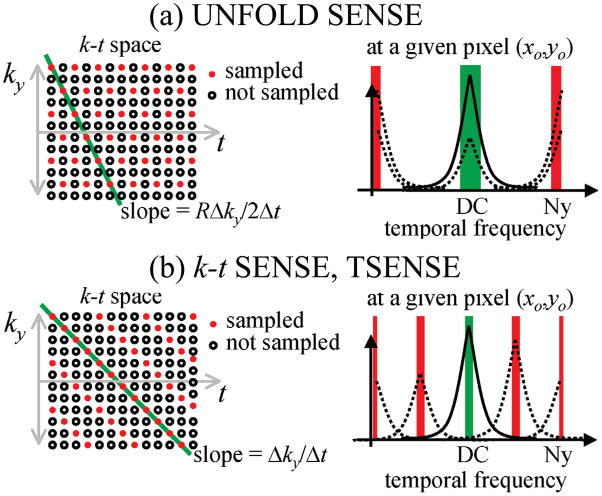Figure 2.
The sampling schemes of UNFOLD-SENSE (a) and k-t SENSE (b) are depicted here. The spectrum for one single (xo,yo) pixel in the aliased image is shown on the right, side, for each sampling scheme. The steeper slope typically selected in UNFOLD-SENSE pushes half of all overlapped signals to the Nyquist frequency. In contrast, the gentler slope selected in k-t SENSE evenly distributes the aliased components along the temporal bandwidth. For both methods, their strength comes from reducing the amount of overlap found at DC (frequency bands highlighted in green) and their weakness from the fact that weak non-aliased signal cannot be reliably recovered when overwhelmed with strong aliased signal (frequency bands highlighted in red).

